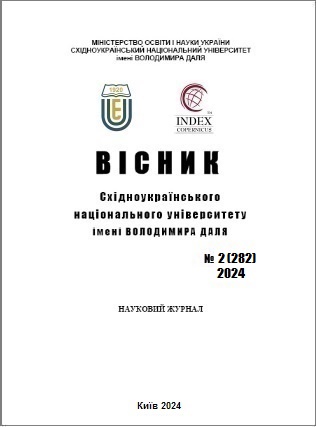Research and analysis of the micro-hardness of the finished surface of the rolled shafts
DOI:
https://doi.org/10.33216/1998-7927-2024-282-2-17-21Keywords:
rental roller, cup forcedly revolved chisel, microhardness, depth of layerAbstract
In this paper, scientific research is aimed at studying the microhardness of the surface layer of the roll, as one of the important problems in machine building. The microhardness and depth of the surface layer are one of the main indicators of the quality of the surface, which play one of the most important roles in the final treatment of the finished product. Proceeding from this issue, the research and study of the microhardness of the machined surface of lathe shafts during fine turning with forced-rotating cup recesses is relevant and in demand in modern production, and especially in mechanical engineering. The studies carried out in the work provided an opportunity to determine the degree and depth of the riveted layer depending on the cutting modes and the angle of intersection of the axes of the tool and the workpiece. Similarly, the analysis of the results obtained as a result of the research is made and presented in the work. The paper shows the values of the depth of the riveted layer and the degree of riveting obtained under the parameters of the cutting modes and the crossing angle. Also, the paper derives an empirical formula for the dependence of the degree of the riveted layer on the cutting modes and the crossing angle, which makes it possible to solve the work's purpose. Since when supplying grade mill equipment, machine-building companies and enterprises transfer to the client the calibration of rolls for the expected profile assortment, developed by their own calibration bureaus, they do not deal with the issue of calibration data and do not always have such properties as universality, economy and flexibility, which is important when final completion of the technological process. Therefore, the main task of engineers in the field of mechanical engineering is to provide the client with equipment for the stable production of final products, while at the same time shortening the time of introduction into operation as much as possible. Therefore, the attention paid to the research and study of the microhardness of the machined surface of the rolling shafts in the case of use for the finishing of cup cutters that are forced to rotate is an urgent issue. The study of microhardness was carried out depending on the cutting modes and the angle of intersection of the axes of the shaft and the tool.
References
1. Васильченко, Я.В. Разработка технологических систем для обработки крупногабаритных деталейна базе адаптивных многоцелевых тяжелыхстанков / Я.В. Васильченко, Т.А. Сукова, М.В.Шаповалов // Вісник СевНТУ. Зб. наук. пр. Серія :Машиноприладобудування та транспорт.Севастополь : СевНТУ. 2013. Вип. 139. С. 28-32.
2. Рябцев И.А. Наплавка. Технологии, материалы,оборудование / И.А. Рябцев, И.А. Кондратьев,Е.Ф. Переплетчиков, Ю.М. Кусков. Киев: ИЭС им.Е.О. Патона НАНУ, 2015. 402 с.
3. Харламов Ю.О. Обробка деталей при відновленніі зміцненні /Ю.О. Харламов, С.А. Клименко, М.Я.Будаг'янц, Л.Г. Полонський: Навч. посібник.Луганськ: СНУ ім. Даля, 2007. 500 с.
4. Priyadarsini, C.; Ramana, V.V.; Prabha, K.A.; Swetha, S. A review on ball, roller, low plasticityburnishing process. Mater. Today Proc. 2019, 18,5087-5099.
5. Tang, J.; Luo, H.Y.; Zhang, Y.B. Enhancing thesurface integrity and corrosion resistance of Ti-6Al-4V titanium alloy through cryogenic burnishing. Int.J. Adv. Manuf. Technol. 2017, 88, 2785-2793.
6. Swirad, S.; Wdowik, R. Determining the effect of ballburnishing parameters on surface roughness using theTaguchi method. Procedia Manuf. 2019, 34, 287-292.
7. Мелконов Г.Л. К вопросу определения выборарежущего инструмента для обработки сферзапорной арматуры / Г. Л. Мелконов //Машинобудування. 2015. № 16. С. 83-88.

